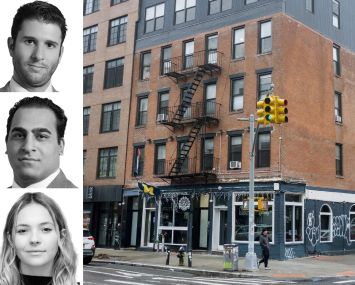Presented By: Placer.ai
Visitation Stats Show How Tariffs Are Actually Impacting Retail
Retail visitation trends this year show that the best way to attract retail customers is by offering solid value.
This was one of the many insights provided by Caroline Wu, director of research at Placer.ai, during “Retail Real Estate: First Half of 2025 Recap,” a Sept. 4 virtual event hosted by Commercial Observer Partner Insights and presented by Placer.ai.
First, viewing overall visitation trends, Wu noted that based on the Placer 100 Retail & Dining Index—Placer.ai’s analysis of the top 100 physical retailers in the U.S.—visitations are on a slight upward trend, but better conclusions will come with the August numbers, which will help identify newer trends related to recent imposition of tariffs on imported goods.
“Looking at 100 of the top retailers in the country, you can see a couple of spikes,” said Wu. “A lot of them are related to differences in the seasonal calendar, but toward the end of the first half of the year, visitation has been up.”
Wu then took a deeper dive, looking at retail categories that demonstrated the most variance over the past year.
This focused on three categories: groceries, discount & dollar stores, and superstores. Measured by year-over-year change in weekly visits, as of the week of Aug. 4, discount and dollar stores showed around a 5 percent rise, one that has been generally consistent throughout the past year. Grocery stores showed an increase of around 2 percent, and superstore visits were down by around the same.
“Value has continued to be one of the biggest stories of 2025,” said Wu. “I imagine this trend is going to continue as the customer continues to be very careful with their wallet, and whether or not they’re getting value or perceived value from what they’re able to buy.”
Drilling deeper into nondiscretionary categories of retail items, including clothing, electronics stores, beauty and self-care chains and home improvement, Placer identified both seasonal and longer-term patterns.
Clothing retailers, for one, have seen increased traffic during this summer and back-to-school season. Taking a longer view, the beauty category had been a bright spot for much of the post-COVID era, but has started to show signs of struggle. Potential changes in this category due to tariffs on imported beauty projects are something to keep an eye on, Wu said.
Looking at consumer staples, the results of the tariffs become more immediate.
“When the tariffs were first spoken about around February and March, we saw a lot of people stocking up at wholesale clubs,” said Wu. “One of the laggers we’re seeing is that drugstores and pharmacies are not doing as well, and same with gas stations and convenience stores. That traffic has dropped off a bit in the summer as well.”
Another notable trend Placer identified is that higher-income consumers are increasing visits to mid-market retailers like Walmart.
Comparing 2024 to 2022, Placer found that Walmart saw increases in traffic for households earning $60,000 a year and higher, with the largest gains—0.4 percent—coming from households earning $150,000 per year and higher.
Households earning $50,000 and lower showed decreased visits.
Wu believes this is the start of a growing trend for higher-income households as, she said, “people become more concerned about things like inflation or purchasing power.”
Wu then presented several charts showing the recent fate of some of our larger retailers. First, she showed how Target has faltered while Walmart’s overall visitation has remained relatively flat.
“Target has been seeing negative year-over-year traffic for most of the first half of 2025,” said Wu, who then noted that membership warehouses are faring considerably better.
“We’re seeing a lot of interest in membership warehouses,” said Wu. “Costco, Sam’s Club, and BJ’s Wholesale have all seen increased year-over-year traffic.”
Along with this, Wu said that Placer has identified growing trends in “people chipping in together on warehouse memberships in terms of being able to save money.”
“We’re seeing this with some millennial households,” said Wu, “and particularly in light of tariffs, people are stocking up on items where they might be afraid of seeing prices go up by 10, 15 or 20 percent.”
In perhaps a counter to Walmart’s higher-income visitors, warehouse clubs have seen increased traffic from younger and lower-income demographics as well as singles and starter households.
Shifting to restaurants, one trend stands out: People love chicken, in all its forms and preparations.
Viewing restaurant chains with at least 100 locations throughout the U.S., Raising Cane’s Chicken Fingers showed the largest year-over-year increase in visitations from 2023 to 2024 at just over 12 percent.
Next up, in order, are Chili’s—an outlier that accounts for most of casual dining’s category growth this year with year-over-year increases of 20 to 30 percent—and the chicken wing chain Wingstop. Dave’s Hot Chicken also made the top 10 with an increase of just over 7 percent.
Taking a broader per-category view, Placer shows that chicken chains in general showed the largest increases in the first half of 2025, followed by Mexican-inspired chains such as Chipotle, which was also in the increased visitation top 10.
Burger and sandwich chains, by contrast, saw drops in visitation of just over 2 percent each over the first half of the year.
Wu presented visitation information on several more categories, illustrating the breadth of Placer’s informational capabilities, then took a few questions from viewers.
One final question about whether department stores are in a state of permanent decline allowed Wu to end the presentation on an ironic high note.
“I read just this morning that Macy’s is up 20 percent, so that’s great,” said Wu, who acknowledge consolidation among lower performers. But for stores in promising locations, the need for the one-stop-shop experience that department stores provide is still very much in play, she said, while others will experiment with new formats that more closely cater to today’s faced-with-endless-options consumer.
“Bloomingdale’s has been experimenting with Bloomie’s, which is a smaller, more locally curated store,” said Wu. “We looked at a location that had been a Bloomingdale’s and closed and became a Bloomie’s, and from a sales-per-square-foot perspective it was still performing quite well. So we might see the end of some large department stores, but I think they’ll always be an anchor for shopping centers. It’s going to be a constant evolution.”


